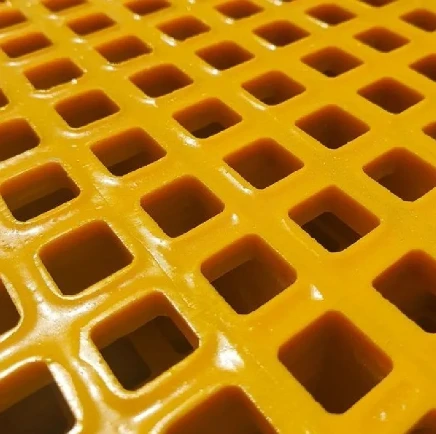loading...
- No. 9, Xingyuan South Street, Dongwaihuan Road, Zaoqiang County, Hengshui, Hebei, China
- admin@zjcomposites.com
- +86 15097380338
- Welcome to visit our website!
Understanding CHS Tube Dimensions and Their Applications in Engineering Projects
Understanding CHS Tube Sizes A Comprehensive Guide
When it comes to construction and manufacturing, the size and specification of materials are critical for ensuring structural integrity and performance. One of the most commonly used materials in various industries is the Circular Hollow Section (CHS) tube. CHS tubes are versatile and widely employed in structural applications due to their excellent strength-to-weight ratio and aesthetic appeal. This article will delve into the various sizes of CHS tubes, their applications, and the factors to consider when selecting the right size for your project.
What is a CHS Tube?
Circular Hollow Sections (CHS) are pipes or tubes with a circular cross-section. They are manufactured from steel and are available in various sizes, thicknesses, and finishes. The four main dimensions that define a CHS tube include the external diameter (OD), wall thickness, internal diameter (ID), and length. Understanding these dimensions is essential for engineers, architects, and builders when designing structures that require the use of these tubes.
Standard Sizes of CHS Tubes
CHS tubes come in a range of sizes, typically defined by external diameters. Standard sizes can vary by region, but common diameters include 20mm, 25mm, 32mm, 40mm, 50mm, 76mm, and 100mm, among others. Wall thickness can also vary, often ranging from 1.5mm to 10mm. The combination of these dimensions results in a variety of CHS tube profiles, which can cater to different load-bearing requirements and aesthetic preferences.
For instance, a CHS tube with a 100mm OD and a 5mm wall thickness will have a significantly higher load-bearing capacity compared to a 50mm OD tube with a 2mm wall. Hence, selecting the right size is crucial for the structural dynamics of a project.
Applications of CHS Tubes
The versatility of CHS tubes makes them suitable for various applications
1. Structural Support CHS tubes are extensively used in the construction of buildings, bridges, and other structures, providing the necessary support and stability. 2. Furniture Design Their sleek appearance and strength make them popular in furniture manufacturing, including tables and chairs. 3. Fencing and Gates CHS tubes are often used to create durable fencing and gates due to their resistance to bending and breaking. 4. Sports Equipment Many sports-related items like goalposts and fitness equipment utilize CHS tubes for their robust structure.
chs tube sizes

Factors to Consider When Selecting CHS Tube Sizes
Choosing the right CHS tube size involves considering several factors
1. Load Requirements Determine the load that the tube will need to support. This includes dead loads (weight of the structure itself) and live loads (weight of occupants and movable objects). 2. Material Strength The strength of the material used in the CHS tube can influence the thickness and diameter you choose. Higher strength materials can allow for thinner walls, reducing weight while maintaining structural integrity.
3. Environmental Conditions Consider whether the CHS tube will be exposed to harsh environmental conditions. In corrosive environments, thicker walls or protective coatings may be necessary.
4. Aesthetic Considerations The visual aspect of the structure may dictate the size and finish of the CHS tube. Thinner tubes may be more aesthetically pleasing but might compromise structural integrity if not chosen wisely.
5. Manufacturing Capabilities Ensure that your supplier can provide the selected sizes and thicknesses. Some specialized sizes may require custom manufacturing.
6. Industry Standards and Regulations Familiarize yourself with local building codes and standards that might dictate specific sizes and materials for the applications you are dealing with.
Conclusion
Understanding CHS tube sizes is paramount for anyone involved in construction or manufacturing. From ensuring safety and stability to determining aesthetic appeal, the choices made can significantly impact the outcome of a project. By carefully assessing load requirements, material properties, and environmental conditions, you can select the appropriate CHS tube size for your needs, guaranteeing both functionality and style. Always consult with structural engineers or materials specialists to make informed decisions, as the right tube size plays a critical role in the overall success of your project.
-
GRP Structures: The Future of Lightweight, High-Performance EngineeringNewsJun.20,2025
-
FRP Water Tank: High-Performance Storage for Corrosive and Clean Water SystemsNewsJun.20,2025
-
FRP Square Tube: The New Industry Standard for Chemical and Structural ApplicationsNewsJun.20,2025
-
FRP Pultruded Profiles: The Ultimate Choice for Lightweight Structural StrengthNewsJun.20,2025
-
FRP Handrails: The Safer, Smarter, and Stronger Choice for Modern InfrastructureNewsJun.20,2025
-
FRP Grating: The Smart Solution for Durable, Lightweight Industrial FlooringNewsJun.20,2025
-
Why Choose a Galvanized Water Tank for Your Storage NeedsNewsMay.21,2025
